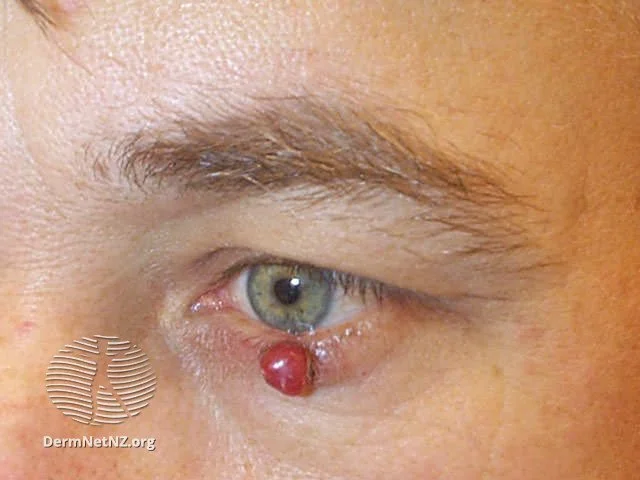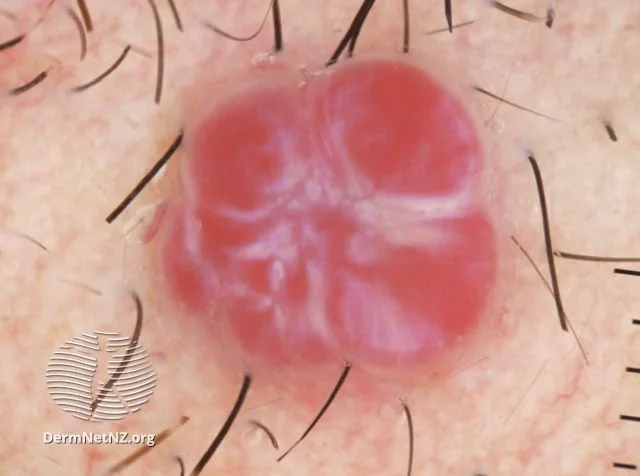
Pyogenic Granuloma
An example of a pyogenic granuloma, which shows up as a red bump on the skin, often on the face or hands, that bleeds very easily.
Credit: DermNet NZ
What is pyogenic granuloma?
Pyogenic granuloma is a benign skin growth resulting from an overgrowth of tiny blood vessels. It generally appears as a shiny red nodule, sometimes resembling the surface of a raspberry. Although not harmful, these growths can be discomforting and may bleed extensively. Hence, it's typically advisable to seek treatment.
What causes pyogenic granuloma?
The precise cause of pyogenic granulomas remains undetermined. However, they result from an over proliferation of blood vessels. Predominantly seen in children and young adults, various factors are believed to heighten the risk of developing them:
Physical injuries such as cuts or minor punctures
Presence of infections, notably by Staphylococcus aureus
Hormonal shifts, observed during pregnancies (in about 5% of cases) or occasionally with the use of contraceptives
Administration of certain medications, including acitretin, isotretinoin, or specific protease inhibitors
Viral infections
What are the symptoms of pyogenic granuloma?
These growths commonly initiate as small, painless red or blue-black spots, expanding rapidly over a few days to weeks. A typical pyogenic granuloma measures between 1-2 cm and tends to bleed or ulcerate with ease. If located in areas frequently subjected to irritation, they can become painful. They predominantly arise as solitary lesions, commonly appearing on the head, neck, upper torso, hands, feet, or even within the oral cavity or other mucosal sites.
How do I treat pyogenic granuloma?
Owing to their susceptibility to bleeding and irritation, many individuals opt for treatment. Even post-removal, there's a 5-10% likelihood of recurrence, necessitating further treatment. Nonetheless, in some instances, such as drug-induced or pregnancy-associated granulomas, spontaneous regression is possible. Treatment modalities include:
Surgical excision: The lesion is surgically removed, often ensuring its complete elimination.
Cauterization or electrosurgery: The lesion is burned off using electric current or other tools.
Laser Therapy: A concentrated beam of light is used to obliterate the lesion.
Cryotherapy or chemical cauterization: Particularly effective for small lesions, this involves using cold temperatures or chemicals to destroy the granuloma.
Topical treatments: Imiquimod cream or topical timolol, which can be particularly beneficial for children.
Intralesional steroids: These are injected into the lesion to reduce its size.
Pyogenic granulomas often show up on the face or hands.
Credit: DermNet NZ
An up-close image of a pyogenic granuloma surrounded by hairs.
Credit: DermNet NZ


